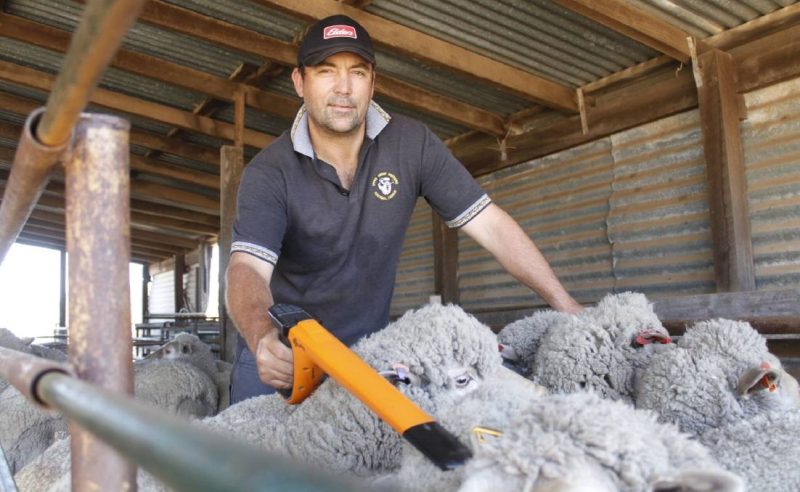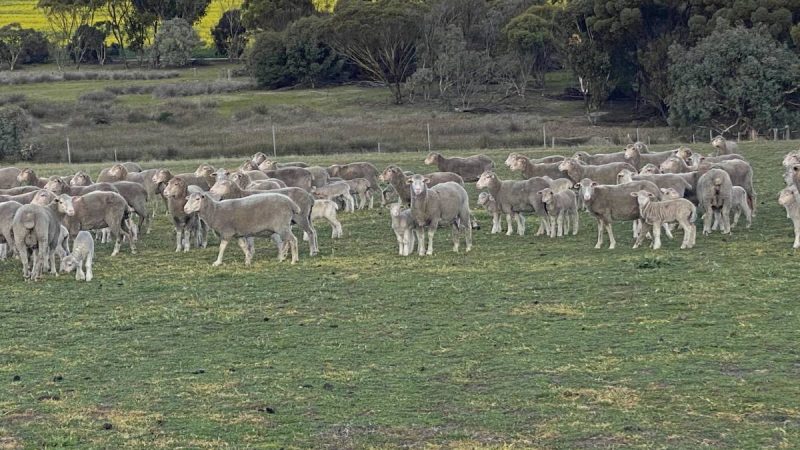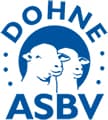Lambing rates up for Clayton South of Wagin
Farm Weekly By Brooke Littlewood – September 19 2022
WAGIN crop and sheep farmer Clayton South’s mindset for lambing next season is to keep improving with a few slight changes because – “if you keep doing what you are doing, you will end up with more of what you’ve got”.
Mr South described this lamb marking season the best to date, and he only plans to go up from here.
The three to five-year goal for his family farm’s self-replacing Dohne-Merino flock is to crack 150pc.
Given lambing percentages have hovered upward of 120pc in the past three years – it is definitely achievable.

With a 70:30 mix, sheep have always revolved around Mr South’s cropping schedule, but they still play an important part in the business.
Mr South farms with wife Polly and four sons, who have relocated to Dunsborough for their education.
The business relies heavily on farm manager Tristan Storer and two young staff Josh Kirk and Zack Johnston.
“It is important we are all on the same page and understand what we are trying to achieve,” Mr South said.
“That is so everyone has an input into breeding and management decisions.”
Marking wrapped up last month, with just over 137 per cent in adult ewes – including maidens – and 66pc for ewe lambs joined.
This was up on 124pc last year and a previous best of 128pc in 2020.
So, keeping the percentages in mind, how did the actual numbers fair for Mr South’s flock this season?
Well, overall, a total of 2771 ewes were joined with 3801 lambs marked.
At the time of scanning, there were 147 dry ewes, 615 singles, 1865 twins and 144 triplets.
This season, 1282 of the 1921 ewe lambs joined scanned in lamb with 823 singles, 449 twins and 10 triplets with a further 1275 lambs marked from the ewe lambs.
“We were aiming for 5000 lambs marked after preg-scanning, so it was pleasing to see a good result transfer to lambs on the ground,” Mr South said.
Taking a closer look at the South’s lambing program – adults and ewe lambs are joined with rams on February 1 – adults over 28 days, and ewe lambs for 42 days.
Ewes are trailed fed lupins on stubbles pre-joining.
Post preg-scanning in mid-April, they are confinement fed until up to two to three weeks before July lambing.
The six to seven-month-old ewe lambs are weighed two to three weeks before joining and are cut-off at 35 kilograms.
They are then lupin flushed with 500 grams of lupins per head, per day over a 10-day period, starting a week before the rams go in.
Mr South started mating ewe lambs a decade ago, as a possible way to lift production.
Every year since then there has been an increase in the number mated and number in lamb.
“At scanning, ewes are preg-scanned, foetally aged into early and late cycles and identified as triplets, twins and singles,” Mr South said.

“With all ewes EID tagged, our scanner splits our 28 day joining in half (42 days split in half for the ewe lambs)
“The scanning result is recorded, which enables us to target our pre-lambing nutrition and vaccination with a bit more precision.
“We end up having two 18-20 day lambings that overlap by eight to 10 days in the middle.”
Mr South said it sounded more complicated than it actually was, as there was still a three-way draft at the scanner with twins/triplets, singles and dries.
Post-scanning, all the multiples were run together in a couple of bigger mobs, while singles were generally run as one mob.
Four to six weeks pre-lambing the mobs come in through the autodrafter and split into earlies/lates with the earlies receiving their pre-lambing booster and the lates drafted off and given their booster two weeks later.
“This enabled us to start increasing the feed ration to the earlies, as their nutritional requirements ramp up during the last 30 to 40 days before lambing,” Mr South said.
“Whereas, it gives us another two weeks before we need to for the lates.
“It is the same with deferring lambing paddocks – we know we can keep the lates confined for an extra week or two, which can make a big difference in a tight year.”
By the time June hit this year, the Souths had a reasonable break.
This allowed for early twins to be put straight out, after a pre-lambing needle with plenty of feed infront of them.
During lambing ewes are not usually checked or disturbed.
“None of us are qualified ovine midwives so we’d prefer to leave them alone during lambing,” Mr South said.
“We’ve tried checking them daily and weekly in the past and even with drones, but my gut feel is we were just disturbing them too much.
“We did check the ewe lamb singles once a week after the start of lambing as we were concerned we’d fed them up a bit too much and they might have trouble with lambs getting stuck.
“But both lamb and ewe survival were better than in past years.”
Mr South put their best lambing percentage down to a simple case of capitalising on their best preg-scanning result.
He said a bad scanning can’t be turned into a good lambing because the yield potential was already set.
“A good scanning can set you up, but then it is up to us – as managers – to make sure each ewe has what she needs to keep as many lambs alive as possible.”
For the past three to four years, the flock had been sitting between 120pc to 130pc.
And this year, after looking at usual lamb survival numbers, Mr South said they would’ve been disappointed not to get over 130pc.
He said it was pleasing to improve on overall lamb survival, however – again – there is still plenty of room for improvement.
“We lambed some of our older twins in mobs of over 200-head, which we knew was a bit of a compromise,” Mr South said.
“We thought our older ewes may be able to handle the larger mob sizes or lack of privacy better.
“A couple of larger mobs were pleasing, but others were a bit disappointing.”
In an ideal world, Mr South would prefer to lamb in mobs of around 50 to 100 for twin-bearing ewes.
However, he said it was difficult to manage with current paddock sizes.
“Everything has a cost benefit, so we will just continue slowly improving what we can,” he said.
“I feel we are getting the basics right, it is just tinkering with things to chase that last few percent of improvement.
“With a big line of replacement ewe lambs to bring in, we’re able to cull hard for the traits we are chasing.”
Mr South said this also provided options going forward – whether that was to quickly and easily increase numbers with high cropping inputs looming or to maintain current numbers and have plenty of surplus ewes to sell.
Either way, he is sure too many lambs is not a bad thing.
While the South’s focus isn’t on wool, they have recently signed up to the Responsible Wool Standard (RWS) as mulesing ceased on the property in 2016.
Despite this, Mr South said no additional crutching or fly treatments were needed than what had previously been used.
“The extra numbers have enabled us to cull heavily for dags and breed sheep that can handle a worm burden,” he said.
“We’ve only just signed up with RWS and sold one clip through the system but it delivered a 100-150c premium which was pleasing.
“Our adult ewes are still cutting four to five kilograms of 18-19 micron AAAM wool so the wool still covers all inputs for the sheep operation for the entire year, the extra sheep sales are a bonus.”
Recently, the Souths were named a focus farm for the T90 (Towards 90) program, which is funded by Meat & Livestock Australia.
The program aims to help producers improve lamb survival from their current levels with the aim of achieving 90pc for both single and twin-bearing ewes.
“Although we are one of the focus farms, it doesn’t mean we’ve got all the answers,” Mr South said.
“We’re pushing to get to 90pc lamb survival as well, so it is more about producers sharing ideas and helping everyone improve together”










 Facebook
Facebook YouTube
YouTube Instagram
Instagram